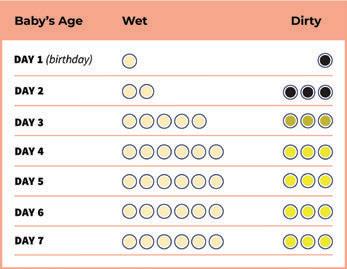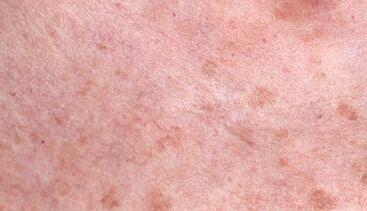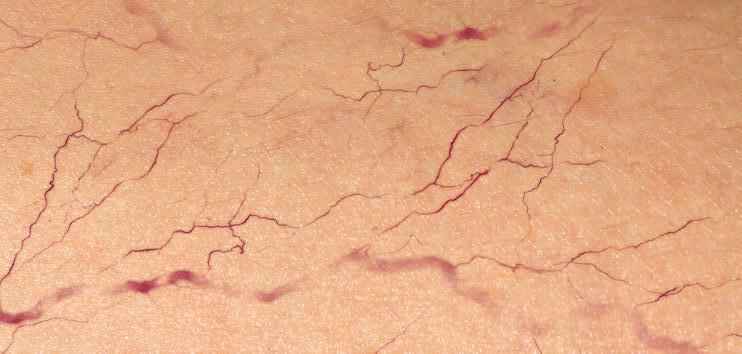
healthy moms healthy pregnancy BEYOND THE MATERNAL GLOW 06 WEANING 101: STARTING YOUR BABY ON FOOD 09 MEASLES AND PREGNANCY Q&A 02 ISSUE 3 | APRIL 2023 healthy baby
For more information contact us at info@melomed.co.za

PROVIDING AFFORDABLE QUALITY HEALTHCARE. www.melomed.co.za
MELOMED GYNAECOLOGISTS.
BELLVILLE 021 950 8930 021 945 2970 Dr Z Mtimkulu Dr MS Jacobs Dr M Magopa Dr T Isaacs 021 945 3483 021 110 5070 TOKAI Dr A Hendricks 021 712 2691 Dr T Motsema 021 110 5940 Dr M Tisane 021 023 2046 GATESVILLE Dr N Allie 021 637 4323 Dr R Kader 021 638 2647 MITCHELLS PLAIN 021 391 4297 021 391 4132/3 021 110 5945 035 772 1581 035 791 5506 035 902 8010 Dr D Karangwa Dr G Khobane Dr MN Nkanyane Dr RK Misra Dr SMJ Zulu 035 791 5438 GATESVILLE & MITCHELLS PLAIN Dr A Davids, Dr MA Jeeva & Dr H Khamissa GATESVILLE: 021 637 1343/4 MITCHELLS PLAIN: 021 392 8141/0516 Dr Z Dunn 021 110 5059 021 110 5064 Dr T Masina Dr O Orji Dr M Maseko RICHARDS BAY Dr J Moodley 021 110 5157 Dr M Tshimanga 035 791 5446
Sleep for parents & baby

For babies: Most of baby’s brain development happens during sleep, and sleep allows baby’s brain to absorb and store what has been learned throughout the day. Newborns and infants spend nearly 50% of their time in deep sleep, which is when the growth hormone is primarily secreted.
Why is sleep so important?
For parents
Decreases
Strengthens ability to cope with stress
For baby
CONTENTS Published in the interest of your health by MELOMED
www.melomed.co.za | 01 Sleep for parents & baby Measles and pregnancy Q&A
big is my newborn's stomach? Beyond the maternal glow Weaning 101: Starting your baby on food 01 02 04 06 09 is on Follow us @melomed_melobabes PUBLISHER: Health Bytes CC | CONTACT: christa@health-bytes.co.za | GRAPHIC DESIGNER: Marius Laubser | TEL: 021 913 0504 | PRINTING: Paperjet HEALTH BYTES
How
Improved reaction time Supports learning
mood
building
disorders Brain
Sharper mental clarity Physical growth and health
Improves mood
Q&A Measles and Pregnancy
Measles, is a highly contagious viral illness. As the government implements a nationwide measles vaccination campaign to tackle South Africa’s worst outbreak in more than a decade, the outbreak has now been declared in all the provinces except for the Eastern Cape. The outbreak has been fueled by the disruption of routine childhood vaccination programmes caused by the coronavirus pandemic and gaps in the country’s immunisation coverage before Covid-19 struck, according to the National Institute for Communicable Diseases. So how can you protect yourself and your unborn child from the measles virus? We answer some frequently asked questions about measles during pregnancy.
How is measles transmitted, and what are the most common signs and symptoms of measles infection?
The virus is highly contagious and lives in the nose and throat mucus of an infected person. It is often spread from person to person through coughing and sneezing and may remain airborne and infectious for up to two hours. This means,
that if you enter a room where a person infected with measles coughed or sneezed up to two hours before you arrived, you still could contract the illness just by breathing the air in the room. If you are exposed to the virus in close quarters, by family members at home, or in a work or social space, you are more likely to catch it than if out in public. When a person has measles, he or she
is contagious from four days before until four days after the appearance of a rash. The most common symptoms of measles are fever, fatigue, cough, runny nose, itchy or red eyes, Koplik spots (white lesions on the inner cheek), and a raised rash. It can take between seven and 21 days from the time you are exposed to the measles virus before symptoms of the illness appear.
02
How do I know if I’m immune to measles infection?
Women who are pregnant should find out if they are immune to measles, if unsure. If you have received at least one dose of the measles-mumpsrubella (MMR) vaccine you are most likely immune to measles. One dose of the MMR vaccine protects about 95 percent of people, and two doses protect about 99 percent. Also, If your rubella test, which is performed routinely in pregnancy, is positive, then you are most likely immune to measles. If the serology test is negative, then you are likely not to be immune. Pregnant women who know they are not immune can lower their risk by not going out to public places, and by ensuring everyone visiting or living with them is vaccinated.
What are the risks of measles in pregnancy?
Measles infections during pregnancy do not cause birth defects, but pregnant women and newborns are more susceptible to medical complications from measles than the general population. These complications include pneumonia and hospitalisation. Measles infections during pregnancy may also cause miscarriage, stillbirth, low birth weight, and an increased risk of preterm delivery.
What happens if I am exposed to measles during pregnancy?
If you are pregnant and know you have come into contact with someone who has confirmed measles, you should discuss this with your Obstetrician and Gynaecologist. If you are not immune, then you may be able to have a treatment (normal human immunoglobulin) to reduce the risk of getting measles. You should discuss this with your doctor as soon as possible because there is a time limit on when it can be administered. You will also need to be in quarantine for up to 2 weeks, whether you are able to have treatment or not.
If you are likely to go into labour in the next 3 weeks, you should also discuss a birth plan with your Obs-Gynae. This means that they can be sure that anyone around you during your labour and delivery is immune. This helps to protect other mums and new babies in delivery suites and maternity units.
What happens if I am pregnant and catch measles?
Measles symptoms include a high fever, runny nose, cough and sore red eyes, followed by a rash that starts on the face and neck, and then spreads to the rest of the body a few days later.
If you think you have measles, it’s important to seek medical advice from your doctor. But phone before visiting your doctor to avoid spreading the virus in the waiting room.
How soon after birth can I get vaccinated?
As soon as you can, you do not need to wait. It is a good way to protect your new baby. You can be immunised while breastfeeding.
What advice is there for parents of new babies?
Babies under 12 months old are too young to be vaccinated. Babies will still have some protection from the antibodies from their mother for a few months, if the mother is vaccinated. You may also want to check those in the household and extended family have been vaccinated if your child is around them.
I am trying to get pregnant, what should I do?
If you know you are not immune, have two MMR vaccinations before you get pregnant. You should wait a month before trying to get pregnant. Otherwise have a blood test to determine if you are immune.
Source:
• www.pregnancybirthbaby.org.au,
• www.pennmedicine.org
www.melomed.co.za | 03
How big is my newborn's stomach?
See how small a newborn's tummy is and learn how to tell if your baby is getting enough milk.

At birth, your baby’s stomach is very tiny, about the size of a cherry or toy marble (about 1 to 2 teaspoons). By day 10, your baby's stomach grows to the size of an apricot (about 60 ml). Our helpful visual below shows the volume of a newborn’s stomach: It doesn't take much to fill up your baby. In the first days and weeks, your baby can only digest a small amount of milk.
How big is a newborn's stomach?
Day 1 size of a cherry 5 - 7 ml 1 - 1.4 teaspoons Day 2 size of a walnut 22 - 27 ml 0.75 - 1 oz One week size of an apricot 45 - 60 ml 1.5 - 2 oz One month size of a large egg 80 - 150 ml 2.5 - 5 oz 04
Small, frequent feeds, sometimes up to 12 feeds per 24 hour period, are the norm in baby’s first weeks. If it feels like, “All I’m doing is nursing/feeding!” then chances are you’re doing everything right. One particular piece of advice to remember if you’re breastfeeding is that milk typically “comes in” on about day four or five after baby’s birth and not right away. It may seem like baby is not getting enough to eat but skin to skin contact and sucking are what helps milk to come in. As your baby grows, he or she may nurse less frequently and drink more in a single feeding. Your milk supply will adapt. During a growth spurt, your baby might want to nurse more often, or for longer.
Overfeeding does not help baby sleep and in fact, it causes unnecessary spit up and gastric discomfort. It is very easy to overfeed from a bottle because baby can’t naturally start and stop the flow. Additionally many new parents who are breastfeeding want to ensure that their baby is indeed eating enough. Of course ask your paediatrician or lactation consultant if you’re worried.
As your milk changes, your baby's bowel movements will too. At first, bowel movements will be black and tarry. Then they'll be greenish to yellowish. Then they will become yellow, loose, and seedy. Around 10 - 15 days after delivery, your baby may have a bowel movement after every feeding or less often.
This chart shows the smallest number of wet and dirty nappies your baby should have in the first week.

Is my baby getting enough milk?
Many moms worry about low milk supply, but most of the time your body makes exactly what your baby needs, even if you don't realise it. It might be hard to know how much baby is consuming during each feeding session. That’s okay though because you’ll always be able to monitor how much is coming out! All babies are different, but tracking the amount of wet and dirty nappies each day for the first week is another way to monitor that baby is feeding well. You may want to keep a log of your baby's nappies in a notebook or use a smartphone app. You can always drop in to your paediatrician for a weight check as well!
Here are other signs that your baby is getting enough milk:
• You can hear or see your baby swallowing.
• Your baby seems happy after feedings, with relaxed hands and feet.
• Your baby is growing and gaining weight. Your health care provider can check your baby's weight gain.
Source:
• letmommysleep.com/blog/how-big-newborns-stomach
• wicbreastfeeding.fns.usda.gov/low-milk-supply
Beyond the maternal glow
COMMON PREGNANCY-RELATED SKIN PROBLEMS
 By Dr Fakir
By Dr Fakir
Skin-related conditions in pregnancy can be classified as either physiological (hormone related); pre-existing (present before pregnancy), or those conditions that are specific to pregnancy. Fortunately, most of these ailments resolve postpartum and only a small percentage require medical treatment. Here is a list of the most common pregnancy-related skin concerns.
Physiological
STRETCH MARKS
Stretch marks develop in up to 90% of pregnant women by the third trimester. Pregnancy causes your skin to stretch faster and more than usual, particularly in the abdomen, breasts and thighs. Hormonal factors affect the skin’s elastic fibres and together with rapid stretching, induces thinning of the skin. Initially, they may appear as reddish or purple lines or bands. After pregnancy, they gradually fade and become silvery white. Very little evidence supports the use of stretchmark cosmetics. Instead, avoiding rapid weight gain, and basic skin care such as moisturising, may minimise their appearance.
MELASMA
Areas of your skin appearing darker is often one of the first signs that you’re pregnant. Up to 90% of expecting moms find that their nipples and surrounding skin darken. Other pigmented areas such as moles and freckles may darken too. Not to worry though, as these changes often lighten with time. Brown or grey patches of pigmentation on the forehead, cheeks and neck are known as chloasma or melasma. Caused by normal pregnancy-related hormonal changes, the condition is exacerbated by sun exposure. Wearing a broad-spectrum sunscreen with a sun-protection factor of at least 30, wearing sun-protective clothing, and limiting exposure to sunlight, are paramount. Although melasma often fades within three months of the baby’s birth, one in ten women find that the patches persist. The use of a tinted foundation may be useful in camouflaging the patches and medical therapy can be prescribed postpartum.

06
LINEA NIGRA
The linea nigra is a vertical, hyperpigmented (darkened) line that appears down the middle of the abdomen. The brownish streak is usually 1cm in width, crosses the navel and is induced by normal hormonal changes. Usually the pigmentation appears around the fifth month of pregnancy and disappears several months after delivery.

SPIDER VEINS

Changes in oestrogen production, normal to pregnancy, can cause dilation, proliferation and congestion of blood vessels. These vascular changes primarily affect the face, neck and arms during the first and second trimester and regresses postpartum.
Pre existing
SKIN TAGS

Skin tags are common, soft, flesh-coloured growths that primarily affect the eyelids, neck, armpits and under the breasts. These growths are benign (not cancerous) and will not affect the fetus. Persistent skin tags can be removed via a simple procedure by your doctor postpartum.
Hormonal stimulation increases the production of sebum – a waxy, oily substance that can clog up your pores, leading to inflammation and breakouts. Pregnancy-related acne often resolves postpartum and is not as severe. Not all acne therapy is safe during pregnancy. Unsafe options include isotretinoin (a form of vitamin A), tetracyclines and hormonal therapies, which increase the risk of birth defects and growth deformities. Safer options include topical azelaic acid, benzoyl peroxide (Benzac) and salicylic acid. Cleansing with a mild cleanser and lukewarm water; not picking pimples; keeping the hair out of the face; using oil-free moisturisers and cosmetics and removing make-up before bed will help remove excess oil, prevent clogging of pores and accelerate healing of existing blemishes. >>

www.melomed.co.za | 07
ACNE
ATOPIC DERMATITIS AND PSORIASIS

Existing atopic dermatitis and psoriasis may improve or worsen during pregnancy. It is recommended that certain oral and topical medication is stopped before pregnancy and consultation with your doctor is advised to adjust management. Pregnancy-specific skin problems are abnormal skin concerns that require medical therapy.
These conditions include:
Polymorphic eruption in pregnancy
Polymorphic eruption of pregnancy (PEP) is the most common pregnancyspecific skin problem. The disorder affects 1% of all pregnancies during the second and third trimester. Extremely itchy, red patches develop on the abdomen, in and around stretch
ABOUT THE AUTHOR
marks. The cause of the ailment is unclear and it is neither contagious nor harmful to the mother or the foetus. Common associations include multiple and first pregnancies. PEP usually resolves spontaneously one to two weeks after birth.
Atopic eruption of pregnancy
Atopic eruption of pregnancy is a common, itchy, eczematous disorder occurring in women who have an atopic background. The disorder has a rapid response to treatment and is harmless to both mother and foetus.
Pemphigoid gestationis
Pemphigoid gestationis is an autoimmune condition, characterised by intensely itchy, urticarial-like eruptions that form blisters on the abdomen during the second or third trimester.
Intrahepatic cholestasis of pregnancy
Intrahepatic cholestasis of pregnancy is a pregnancy-induced liver disorder that presents in the third trimester as severe itching without any skin signs. There is increased risk of premature delivery, low birth weight and intrauterine foetal demise.
Dr. Fakir is a Dermatologist and currently practices at Melomed Tokai.

Tel: 021 712 0689
Email: drsfakir.dermsa@gmail.com
08
DR. SHAFEEQA FAKIR MBChB (UCT) FC Derm (SA)
Weaning 101: Starting Your Baby on Food
Have you gone through the stress and worries of weaning your little one onto solids, or are you approaching that phase and don’t know when, how and what to give them? Let’s first talk about “what weaning is”. Up to this point, your baby has only been drinking milk, whether it is breastmilk or formula milk and weaning is when we start to introduce solid foods into their diets.
When are babies ready for solid food?

Weaning is a vital process in which your baby transitions from breastmilk or formula to food. There has been a lot of debate about when the right time for weaning is. Most health experts recommend that babies begin getting solid food at around 4 to 6 months of age. Six months is often recommended because babies, at this age, begin to need extra nutrients not found in milk, such as iron and zinc. The most important thing to remember is that your baby has to be ready. Here are a few signs to look out for:
Sitting upright in a high chair well
Good head control
Can hold food in their mouth, is willing to chew, swallow and not just spit it out.
Can pick up food and put it in their mouth – good hand-eye control
Is curious at mealtimes, show a lot of interest in your food and keen to get involved.
If you think your baby is showing signs that they are ready for solids but aren’t yet 6 months old, speak to your paediatrician for advice. >>
www.melomed.co.za | 09
Traditional vs baby-led approach
There are two different ways to wean your baby: Traditional (also known as spoon-led) weaning and baby-led weaning (BLW). Spoon-led weaning is when you feed your baby with a spoon and they literally just swallow. You’ll begin with smooth purees before moving to mashed and chopped foods, then finger foods and finally small bites. For baby-led weaning, babies are encouraged to self-feed from the start. You can introduce solid foods as finger foods and allow your child to explore solids
at their own pace. They pick finger food up themselves, discover how to move it around in their mouths, chew and swallow.
The best part about baby-led weaning is that they play with their food (which can of course get messy!) and in the process learn and discover new abilities. But there is no right or wrong way. You are the parent and you know your baby best and you can also mix these methods to determine what’s most appropriate.
Certain practices can help make weaning more successful, such as including your baby at family meals, offering savoury foods before sweet ones and allowing your baby to make a mess.
First tastes
First tastes are important for developing good eating habits and exposing your infant to a wide variety of flavours. Try to make this a positive experience for your baby by allowing them to play with, touch and taste new foods.
Around an hour after a milk feed and when your baby isn’t too tired is often a good time to try the food. Mixing foods with a little breastmilk or formula milk can improve acceptance.
Appropriate first foods include:
Soft, steamed vegetables: Broccoli, carrot, potato, sweet potato, butternut squash, pumpkin, peas –pureed, mashed or served as finger food


Cereals: Oatmeal, rice, quinoa, mealie-meal – cooked, mashed or pureed to a suitable texture and mixed with a small amount of breastmilk or formula milk

Soft fruit: Banana, mango, strawberries, avocado, cooked pear or apple, plums, peaches – pureed, mashed or served as finger food
Other: Hardboiled egg (mashed or served as finger food), omelette, bread or pita with soft cheese, mash potatoes, yoghurt

10
Start with a few spoonfuls or a couple of bites once a day for about a week to gauge whether your baby wants more or less. Your baby will be clumsy at first so cut the food into finger sizes so that they can grasp it in their hands. As they gain more skill, you can cut the food into smaller pieces but always make sure that it is about the size of a chickpea!
Once your baby is trying various types of food, you can gradually give it more solids. At 12 months, babies should be eating three small meals and a few snacks each day.
Although it’s important to expose babies to a wide range of foods, there are certain foods you should never give your baby. These include honey, undercooked eggs and whole nuts.

Food allergies and choking are common concerns during weaning. That said, certain practices – such as introducing foods individually and avoiding certain high-risk foods – can substantially reduce the risk.
Gagging Choking
New parents are often nervous about starting finger foods because they worry that it will cause their child to gag and choke. Gagging is a natural reflex, and your baby will likely gag as they adjust to eating solids. In fact, gagging is a protective action that helps your baby not choke. Babies gag when they take a bottle to when they suck their fingers, and when they start solid foods. Gagging is loud, they cough, their skin can appear red, and their eyes appear teary. As scary as it sounds, it is good when babies gag, because it helps prevent choking.
Choking on the other hand is always quiet and your baby’s skin can appear blue. A baby chokes when something gets stuck in the back of the throat and blocks the baby’s breathing. You can tell your baby is choking if they cannot breathe, cough, or cry. In the event of a choking baby, shout for help immediately, get them out of their high chair, support their chest and chin with one hand and give 5 sharp blows with the heel of your hand between the shoulder blades.
Enjoy this fun and often a very messy phase of your baby’s life!
VS www.melomed.co.za | 11
(ENT)
Paediatricians















Melomed Mitchells Plain Dr O Adam 021 391 4967/8 Melomed Gatesville Dr R Khan 021 637 3811/3817 Melomed Gatesville Dr M Ismail 021 633 0332 Melomed Mitchells Plain Dr M Bassier 021 391 0199 Melomed Mitchells Plain Dr MW Mathure 021 110 5145 Melomed Richards Bay Dr KP Seake 035 791 5428 Melomed Richards Bay Dr N Sheik 035 772 1425 Melomed Richards Bay Dr. WJ Linton 035 789 0287 Melomed Bellville Dr D Rhode 021 945 1898 Melomed Tokai Dr R Moore 021 110 5941 Melomed Bellville Dr M Ledger 021 946 1347 Melomed Tokai Dr M Meyer 021 712 1643
specialised Paediatricians, Neonatologist, Ear, Nose & Throat
specialists to Baby Clinics.
From our
Melomed Hospitals have specialist doctors to treat all your baby’s sickness and ailments. Melomed Tokai Dr B Nondela Paediatric Surgeon 021 764 7156 12
ENTs
Melomed Gatesville & Tokai Dr. S Ebrahim 021 637 7772
Bellville
Melomed Mitchells Plain Dr. W Makhaye 021 110 5950 Melomed Bellville Dr. A Behr 021

RHO BABY CARE CLINIC AT MELOMED BELLVILLE
Baby clinics
Dr Rhode - Tel: 021 945 1898
RHO Clinic at Melomed Bellville Hospital, Suite 12 on the First floor - Tel: 021 950 8960

The following services are rendered:
1.Follow up on newborn babies from the age of 2 weeks.
2.Immunisations of babies
3.Family planning
2. Immunisations of babies 3.
4.Asthma education
Planning 4. Asthma Education 5. Responsible for doing lung functions for the pulmonologist. 6. Breastfeeding Education
5.Responsible for doing lung functions for the pulmonologist.
6.Breastfeeding Education
Clinic Hours: Mondays to Thursdays: 9:00 - 16:00, Fridays: 9:00 - 13:00
Open some Saturdays as per request and by appointment only. Family
Clinic Hours:
Mondays to Thursdays: 9:00 - 16:00, Fridays: 9:00 - 13:00
MELOMED TOKAI BABY CLINIC
Open some Saturdays as per request and by appointment only.
Melomed Tokai, Suite 406, 4th Floor
Dr Raban - Tel: 021 023 0604 / 074 192 8504
Dr Raban at Melomed Tokai - Tel: 021 023 0604



The following services are rendered:
-Vaccinations
-Breastfeeding consultation

-Circumcision
-Family Planning
-Paediatric Consultation
Planning 5.

Melomed
Dr. Z Doolarkhan
Melomed Bellville Dr. R Mlauzi 021 110 5217 Melomed Richards Bay Dr. L Setoaba 035
Melomed Gatesville & Tokai Dr. J Stulinski 021 761 4909 www.melomed.co.za | 13
945 1502
021 946 2191
791 5440
Melomed Bellville, Suite 07 on the 1st Floor
1. Follow up on newborn babies from the age of 2 weeks.
Family
Paediatric
The following services are rendered:
1. Vaccinations 2. Breastfeeding Consultation 3. Circumcision 4.
Consultation
The following services are rendered:
nose







 By Dr Fakir
By Dr Fakir



































